DFDS RoRo Gets a New Coat
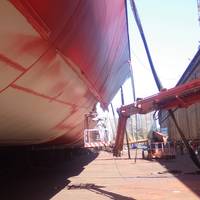
Environmentally safe underwater ship hull coating helps DFDS fulfill its ecological goals.Last July the underwater hull of the roro vessel Magnolia Seaways was coated with Ecospeed in Gdansk, Poland. This non-toxic and easy washable coating system will keep the hull smooth for the service life of the vessel with minimal repair and no replacement. At the same time the rudder of the ship was treated with an Ecoshield coating which was designed specifically to protect underwater…
New Research in Biofilms: Fighting Nature with Nature
Underneath the glistening patchwork of blues and greens lurks an intricate world of unique animal communities, diverse landscapes, and changeable conditions. The ocean is also one of the most extraordinary and fascinating ecosystems on the planet - a place that can host both the source of a problem and the solution. In the maritime sector, an estimated $56 million a year is associated with biofouling for the US Navy alone. Anti-fouling coatings have the potential to reduce millions of tonnes of greenhouse emissions each year, but the industry is yet to find an effective method that is also environmentally friendly. Dr. Maria Salta, an…
Researchers Study Hull Biofouling and Spread of Invasive Species
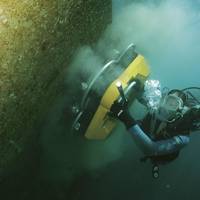
A new study seeks to determine the extent to which biofouling on ships’ hulls is contributing to the spread of invasive aquatic species in the Mediterranean Sea – a phenomenon commonly associated with ship ballasting operations. According to recent research published by Tel Aviv University’s School of Zoology, half the ships passing along the Mediterranean coast of Israel are carrying invasive ascidians, presenting a global threat to ecosystems around the world. TAU’s Dr. Noa Shenkar…
Is Tin Returning in Silicone Hull Coatings?

The reemergence of organotin in marine hull coatings is of increasing concern, with academics and environmentalists calling on International Maritime Organization (IMO) to investigate the use of tin in silicone-based foul release systems and other ships hull coatings. While use of the organotin tributyltin (TBT) was outlawed as an active biocide almost 10 years ago, the IMO is claimed to “have left the door open” for tin as a catalyst, but according to some academics the amount of organotin used suggests it could be acting as the active agent. Dr.
Hull Biofouling Environmentally More Damaging than Ballasting
The entry into force of the Ballast Water Convention this September will not prevent the transfer of invasive aquatic species (IAS) unless there is mandatory legislation in place to prevent biofouling on ships’ hulls. Indeed, while there is ongoing evaluation of the Biofouling Guidelines set out in MEPC.1/Circ.811, there has been little support from IMO Member States for a new mandatory instrument to reduce the impact of bioufouling. Aside from the guidelines, the issue of biofouling is though not to be on the agenda of the MEPC or any other IMO body. There has been a number of studies comparing the transfer of IAS through ballast with that transferred by hull fouling…
Invasive Species & Ship Hull Biofouling
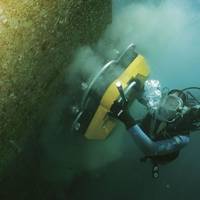
The entry into force of the Ballast Water Convention this September will not prevent the transfer of invasive aquatic species (IAS) unless there is mandatory legislation in place to prevent biofouling on ships’ hulls. Indeed, while there is ongoing evaluation of the Biofouling Guidelines set out in MEPC.1/Circ.811, there has been little support from IMO Member States for a new mandatory instrument to reduce the impact of bioufouling. Aside from the guidelines, the issue of biofouling is though not to be on the agenda of the MEPC or any other IMO body.
The Economics of Ship Breaking & Scrapping

Sometimes being an industry supplier offers interesting insights – your business is touched by the ups and downs of the charter market, but you are never so involved in it that you lose sight of the big picture. Some of our clients have been hit hard by the market’s general downturn; one client I visited last month began 2008 with 41 maritime software licenses for their vessels – just seven remain today. “We just sold another ship yesterday,” he said, and then after a pause: “Please spare me the update costs for this one, it won’t receive any.” Of course, I nodded.
Energy Efficient Dry Cargo Vessel Coated with Ecospeed
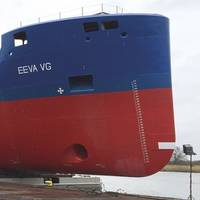
Newbuild M/S Eeva VG, the first of two very energy efficient dry cargo carriers managed by VG-Shipping, was coated with Ecospeed at the end of January ahead of her July 2016 delivery. Both new ships are VG EcoCoasters and will operate in the Baltic region. They are owned by Meriaura Group of which VG-shipping is a part. The vessels were designed as a new ship concept by Meriaura together with its partners Foreship Ltd and Aker Arctic Technology Inc. and are engineered to reduce environmental impact.
I-Tech Seals Market Acceptance for Selektope
Final sign-off of the antifouling active substance Selektope by the European Commission coincides the first disclosure of a commercial application in Asia. The first publicly-disclosed commercial application for a marine coating featuring Selektope will start on November 1 in Singapore, swiftly after developer I-Tech secured European Commission sign-off that the revolutionary antifouling substance can also be used by yards anywhere in Europe. Formal EC adoption of the approval regulation has been signed by EC President Jean-Claude Juncker, meaning that Selektope is permitted for use under the EU Biocidal Products Directive in professional and non-professional antifouling products throughout the EU from January 1, 2016.
Antifouling Selektope Gains European Approval
Final sign-off of the antifouling active substance Selektope by the European Commission coincides the first disclosure of a commercial application in Asia. The first publicly-disclosed commercial application for a marine coating featuring Selektope will start on November 1 in Singapore, swiftly after developer I-Tech secured European Commission (EC) sign-off that the antifouling substance can also be used by yards anywhere in Europe. Formal EC adoption of the approval regulation has been signed by EC President Jean-Claude Juncker, meaning that Selektope is permitted for use under the EU Biocidal Products Directive in professional and nonprofessional antifouling products throughout the EU from January 1, 2016.
Marine Fouling: Surface Texture Investigations May Provide Solution
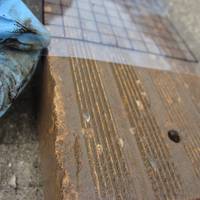
Investigating surface texture could offer a non-toxic solution to marine fouling. Engineering and marine biology experts at The University of Nottingham Ningbo China are using innovative approaches to develop non-toxic solutions to the global problem of marine fouling, in the hope of reducing its environmental and economic costs. Marine industries have long sought chemical solutions to the problem of marine fouling but now researchers at The University of Nottingham Ningbo China (UNNC) are using innovative approaches to look at how surface texture can be used as a non-toxic solution.
Ecospeed Fuel Savings Calculator at Europort
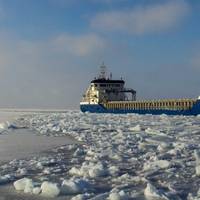
Ecospeed will display the “CLEAN SHIP – EFFICIENT SHIP – GREEN SHIP – PARTNERSHIP” concept during the Europort Exhibition, November 5-8 in Rotterdam. The concept is based on achieving the lowest possible fuel consumption for a vessel during its entire lifetime in an environmental friendly way. CLEAN SHIP – Ecospeed can be cleaned rapidly and will only improve in smoothness with each cleaning. The coating can be cleaned underwater without risk of chemical pollution to the environment or of damage to the coating.
Shipbreaking
The new IMO convention on Ship Recycling and the EU Proposal for Regulation of Ship Recycling are being viewed with concern by ship recyclers in Alang, India. If these come into force it is possible this world’s biggest grave yard for ships will have to close down. Alang is considered natures’ gift to the Indian ship recycling industry. Located in Gujarat, on the West coast of India, the shipyards in Alang recycle approximately half of all ships salvaged around the world. Having come into existence in June 1983, Alang, today encompasses over 180 ship yards stretching across 11 km of the coast line and is presently engaged in dismantling over 150 ships simultaneously. During 2011-12, Alang had achieved a record 415 ships’ demolition.
Lonza Applauds U.S. Joining International Treaty
Lonza Applauds U.S. Lonza Microbial Control, which has long been an active supporter of an international treaty to assure the use of environmentally sound marine coatings products, applauds the United States’ formal approval of the International Convention on the Control of Harmful Anti-Fouling Systems on Ships. With the treaty having secured Congressional and White House approval, the U.S. will officially become a party to the treaty in November 2012. The treaty is designed to eliminate harmful antifouling systems which pose a substantial risk of toxicity to ecologically and economically important marine organisms and specifically bans all use of organotin compounds which act as biocides in antifouling systems.
Ecospeed Protects Icebreaker on Expeditions to Antarctica
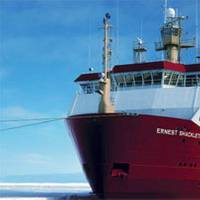
The British Antarctic Survey selected Ecospeed to provide a coating to protect their ice strengthened research vessel Ernest Shackleton during expeditions to the Antarctic region in which it is subjected to extreme mechanical forces. The vessel was coated in Frederikshaven, Denmark, where the grit blasting and application of the two layers were done under the eye of an Ecospeed inspector. The timing was geared to the schedule of the yard. The Ecospeed coating has no maximum overcoating time. Ernest Shackleton is a 1A1 ICE-05 class icebreaker which is used for expeditions to the South Pole.
Biofouling Center Stage
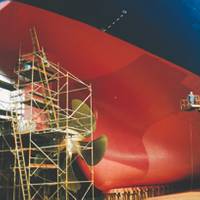
Legislation has been favorably reported out of the Senate Committee in Commerce, Science, and Transportation that would, if enacted, constitute the first official steps by the federal government to come to grips with biofouling of the hulls of ships. The Ballast Water Management Act of 2007 (S. 1578) would, among other things, require the U.S. Coast Guard to conduct a study of vessel-borne vectors (other than ballast water and sediment), specifically including vessel hulls, anchors, and equipment.
Hull Coating to Cut Maintenance Costs
Xiom's "stay-clean" coating for both steel and fiberglass boat bottoms significantly reduces maintenance costs and fuel consumption caused by marine growth. The polymer/ceramic-based coating contains no TBT (tributyl tin) or VOCs (volatile organic chemicals), and does not ablate or wear away. Xiom Corp's new ship and boat bottom protective coating is a patent-pending powder coating. The coating has a network of evenly dispersed active copper oxide and silver ions in a polymer matrix that is fully melted when applied with Xiom's proprietary thermal spray process. The polymer matrix serves to hold the copper oxide in place for years. Even if there should be some break or "tear" in the coating, there is a nylon modified fuse bond epoxy between the hull and coating, maintaining integrity.
GL Presents Award to Hapag-Lloyd
As the first liner shipping company worldwide Hapag-Lloyd has today been awarded the GL Excellence – 5 Stars newly introduced by Germanischer Lloyd. The award is for the introduction of high standards of safety and security, environment and quality. The certificate was awarded by Germanischer Lloyd (GL), one of the world’s leading classification societies. GL provides a kind of ships’ validation, surveying the technical safety of ships, issuing building regulations, monitoring the construction of newbuildings and certifying building units and materials. Over and above this GL carries out mandatory duties, for example with safety and security management systems for flag states.
Tributyltin – final aquatic life criteria
The U.S. Environmental Protection Agency (EPA) issued a Notice stating that it has released the final aquatic life criteria document for tributyltin (TBT). This document may be of particular interest to shipyards that apply or remove anti-fouling paints from the hulls of ships and to ship recycling facilities. 69 Fed. Reg. 342 (January 5, 2004). (Source: HK Law)
Legal: Careful ... Your TBT May Be Showing
If you thought hull anti-fouling systems were boring (think Teredo worm), then you haven't been paying attention to the controversy surrounding use of organotin compounds on the underwater hulls of ships. Fouling has been a problem for ships since time immemorial. The Teredo worm (scientific name: Teredo navalis) was recognized as one of most threatening of marine fouling organisms because it bored into the hulls of wooden ships, potentially damaging watertight integrity. Other fouling organisms adversely impacted the speed of ships. Naval and merchant vessels responded by regularly scrapping the hulls (generally by careening the ship) and by placing sheathing on the underwater hull.
E-Paint Gets USN Authroization
E Paint announced that the U.S. Navy has authorized E Paint SN-1 antifouling paint for use on small boats and craft. Use of E Paint's SN-1 Bottom Coating in Ocean Gray color was specified to meet the Navy's goal to improve overall ship visual camouflage. E Paint SN-1 is the only antifouling coating approved by the Navy for use on small boats as an alternative to silicone fouling release coatings. E Paint products are copper-free replacements for TBT-based antifoulants. E Paint SN-1 is formulated with the booster biocide SEA-NINE® 211 (Rohm and Haas Company), a material that received the first Presidential Green Chemistry Challenge Award in the category for Designing Safer Chemical Products. E Paint SN-1 is EPA approved for commercial use only as an antifouling paint for boat bottoms.
CMP Packs Decade of Tin-Free Experience
The International Maritime Authority has proposed a worldwide ban on tri-butyl tin (TBT) based antifouling paints, starting in January 2003. Confirmation of these dates is expected at the IMO diplomatic conference this October. Although some ship operators have already converted to tin-free antifoulings, most ship operators are waiting until the ban is confirmed before they decide a policy on the use of tin-free antifoulings. This is due to cost and performance considerations. It is clear that most ship operators are not informed about the available tin-free technologies and are not aware that there are products, which are equal in performance to TBT-based antifoulings.
Anti-Fouling Legislation Coming From IMO
Next week at the IMO in London a Diplomatic Conference will be held to finalize the details of the Convention on the Control of Harmful Anti-fouling Systems. In particular the phasing out of tin based (TBT) anti-fouling systems will be finalized with a system put in place to assess future anti-fouling systems. INTERTANKO, together with the other main industry representatives ICS, Intercargo, SIGTTO, OCIMF and Bimco have submitted a paper to the Conference focusing on those issues which concern the industry and which still need to be resolved. One of the greatest concerns is the possibility of having to remove all trace of a TBT based coating after 2008 and so requiring the complete blasting of the hull.







